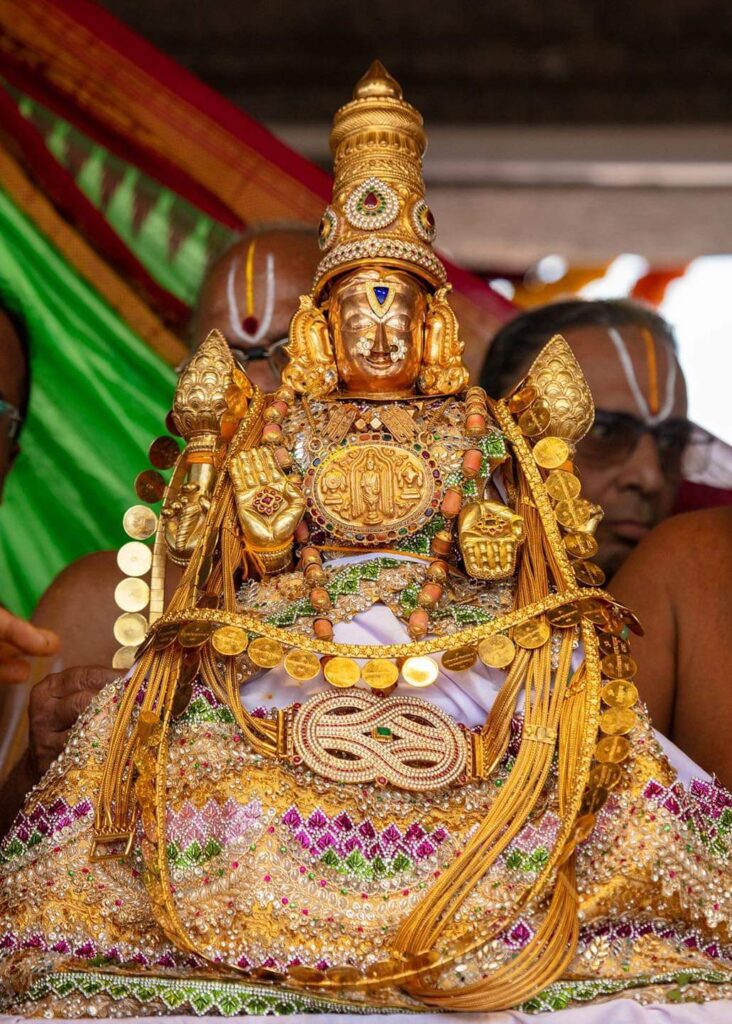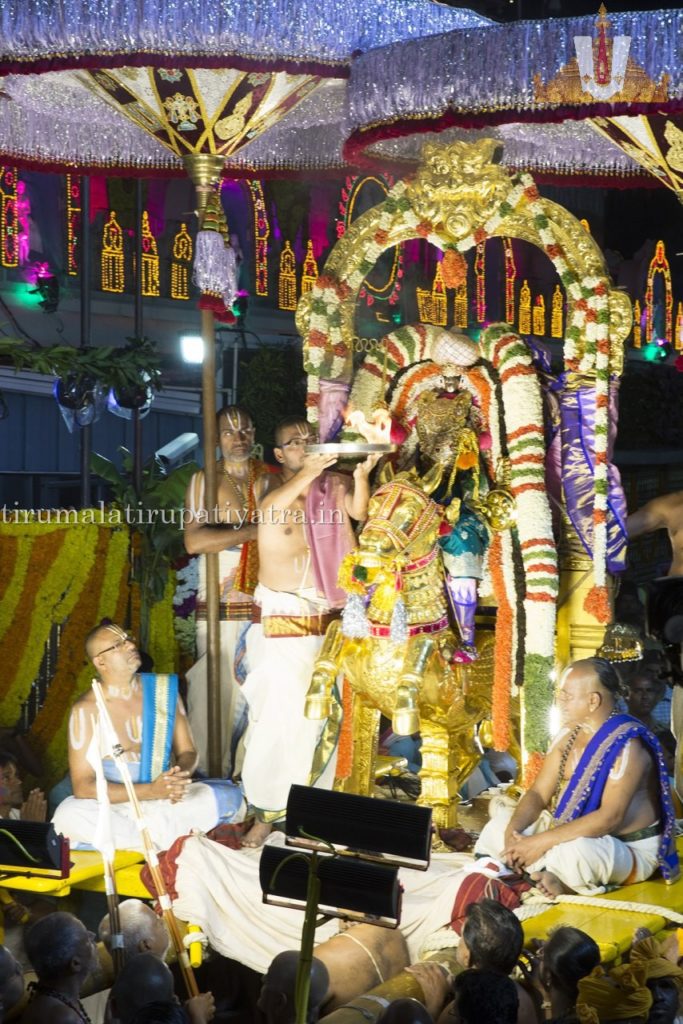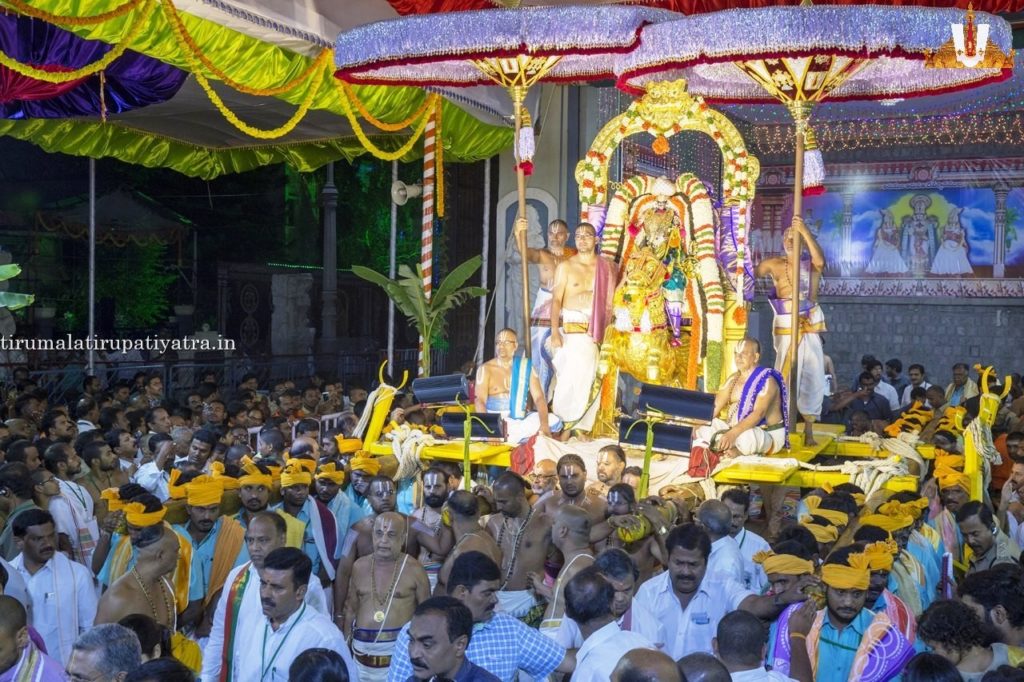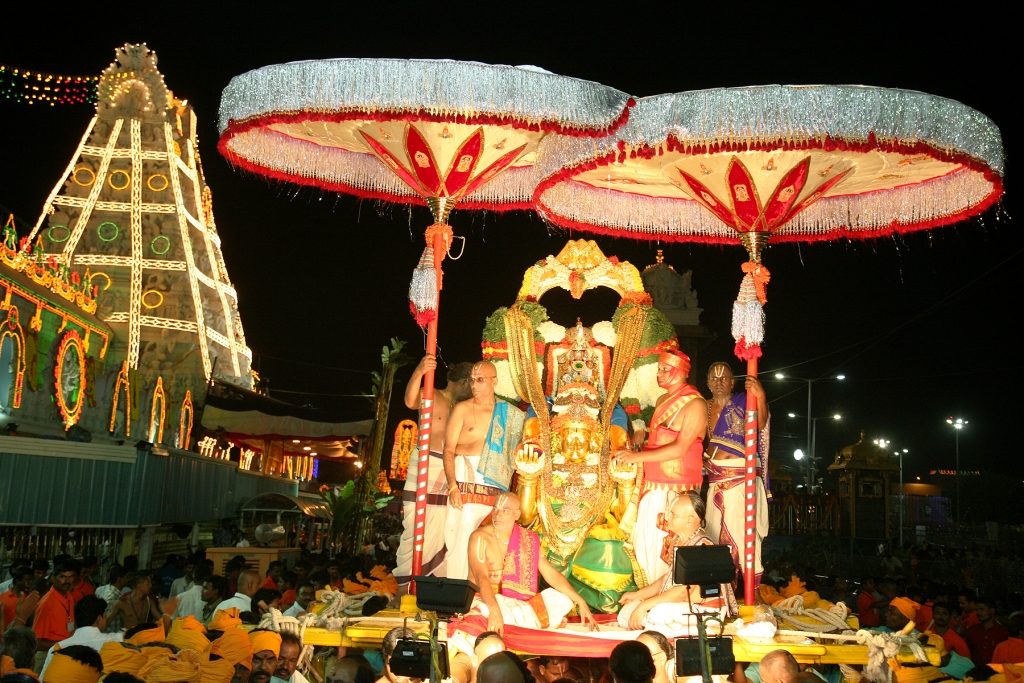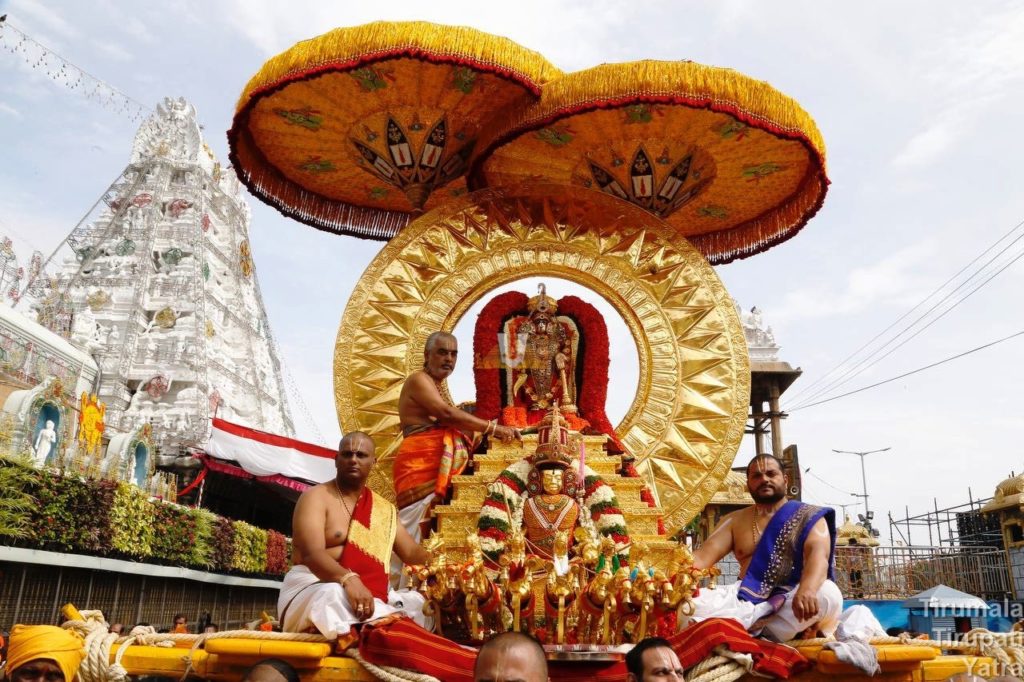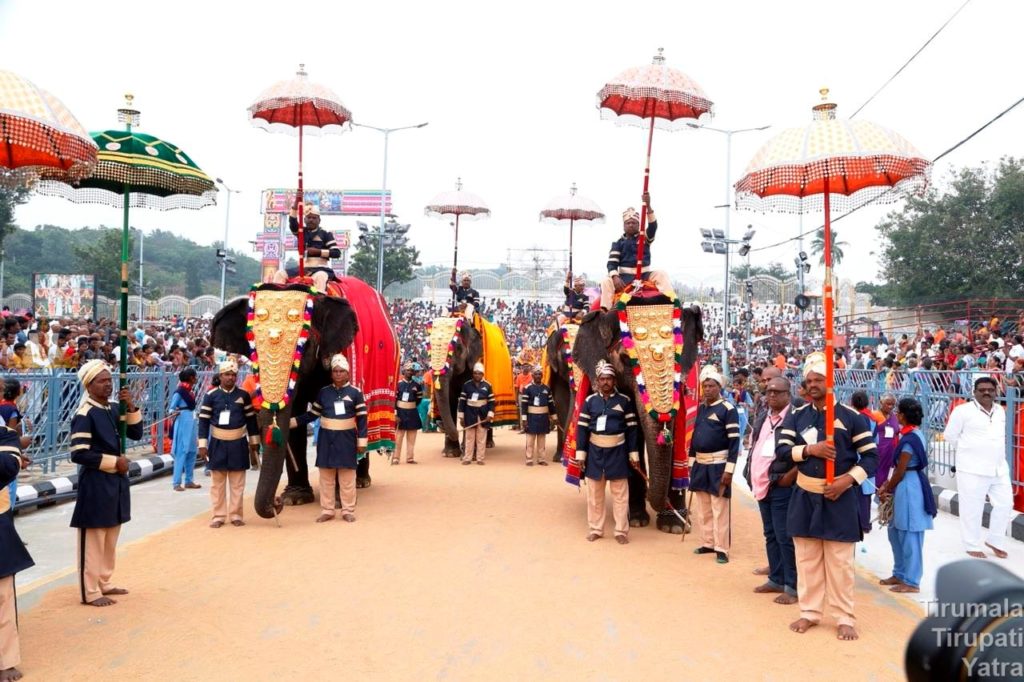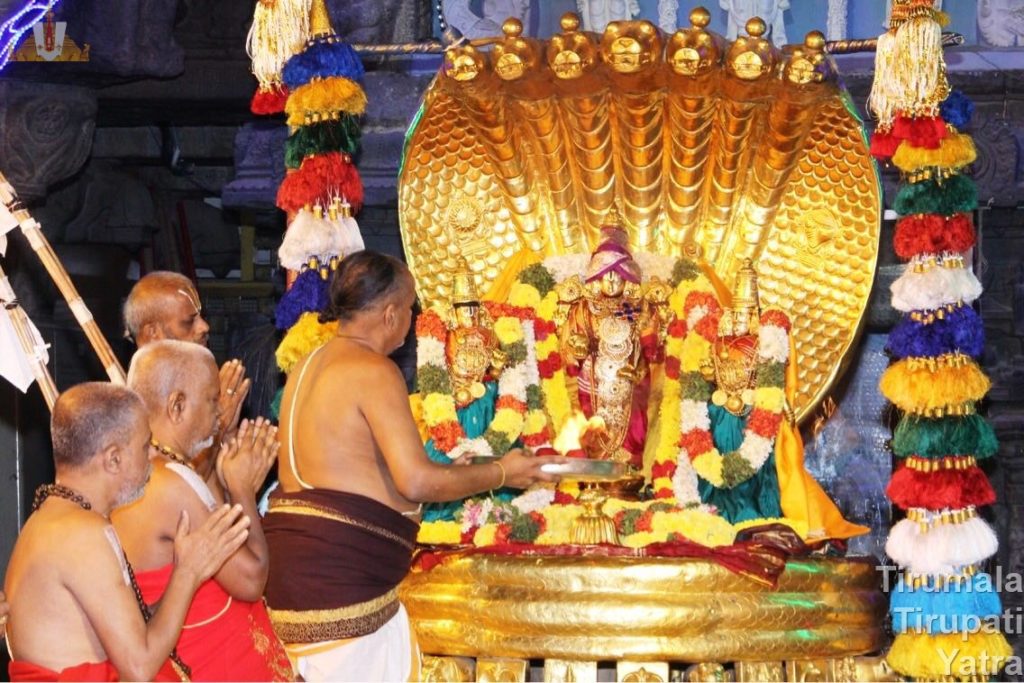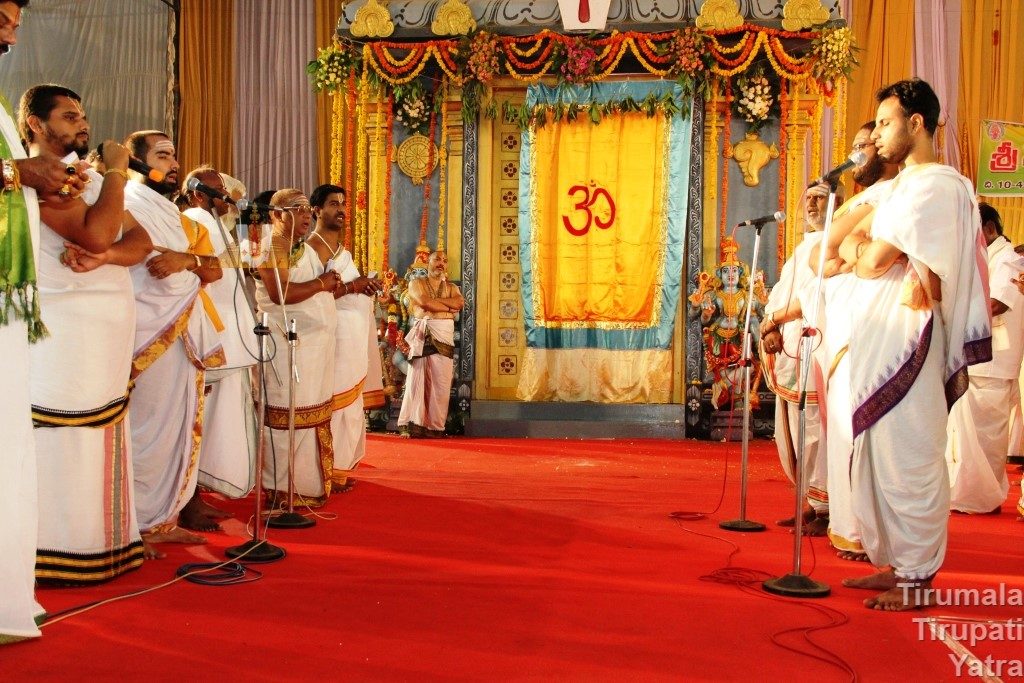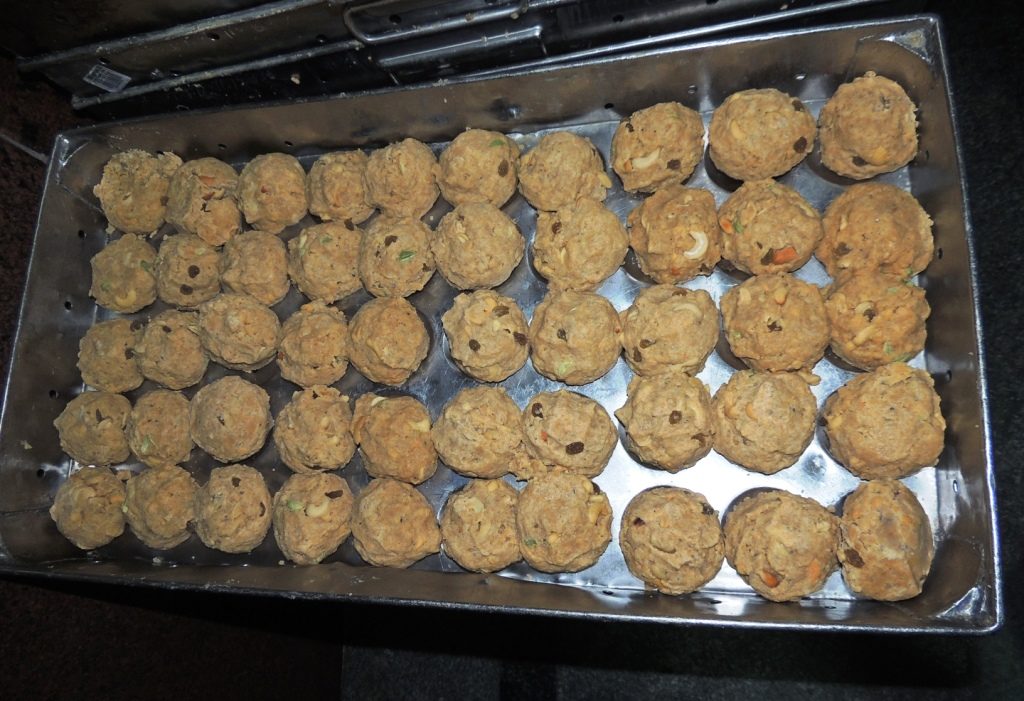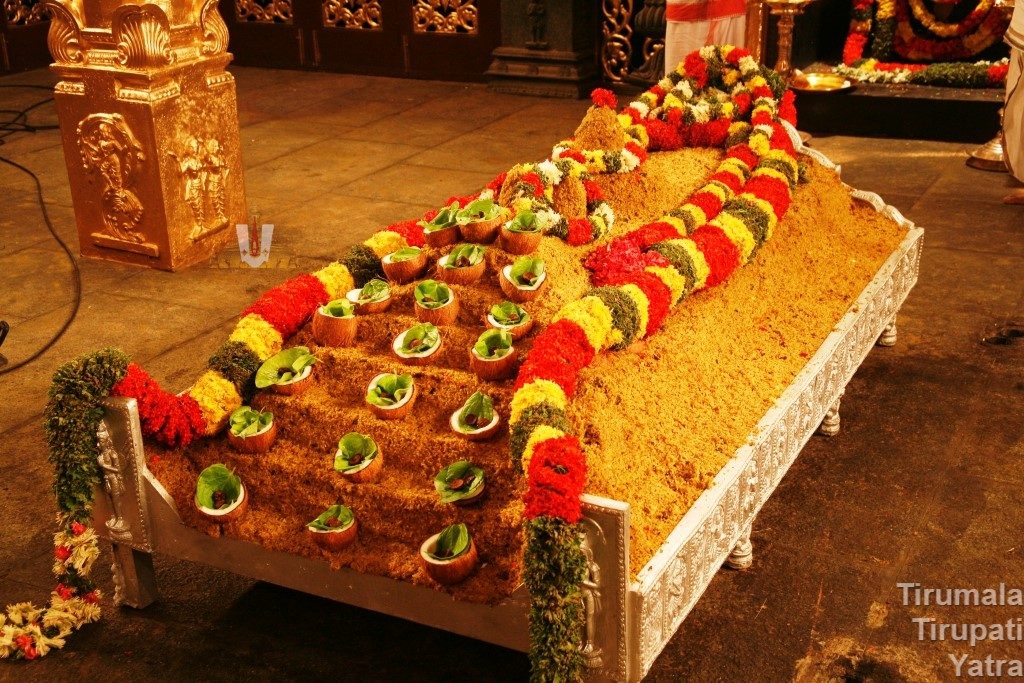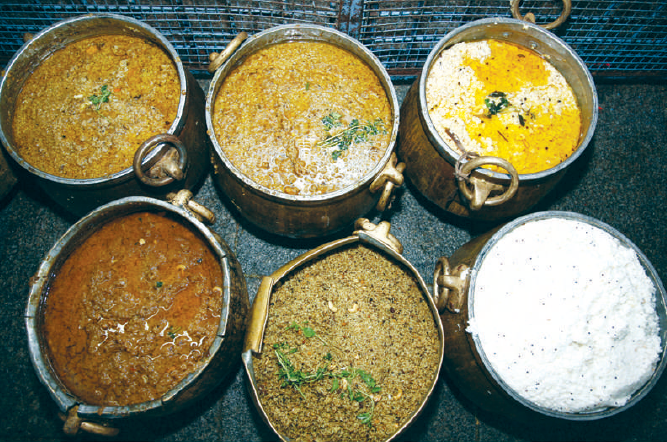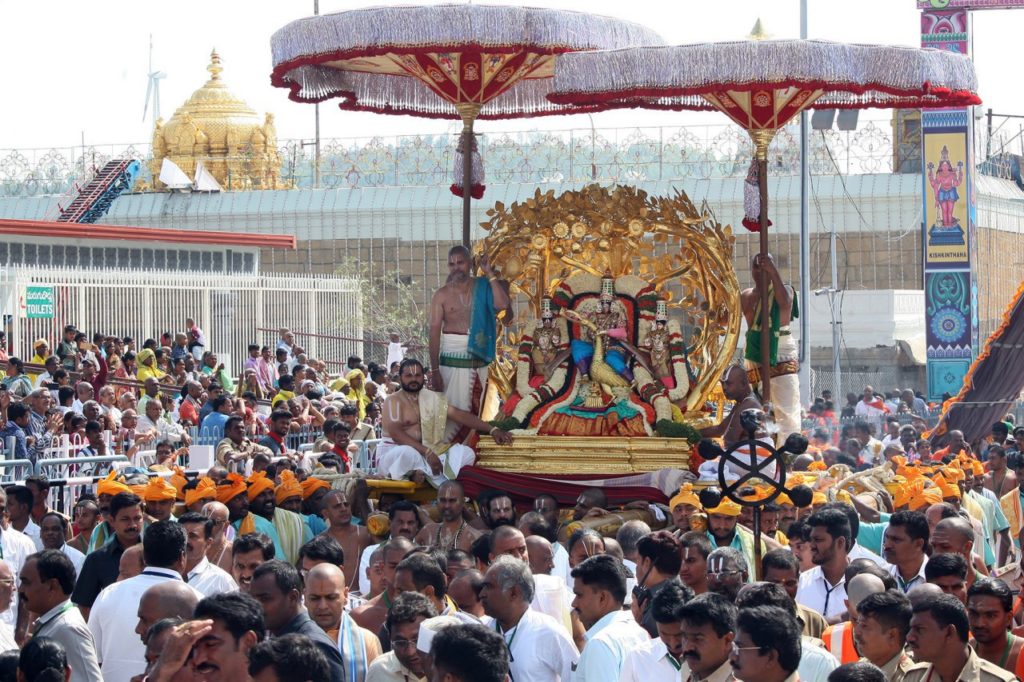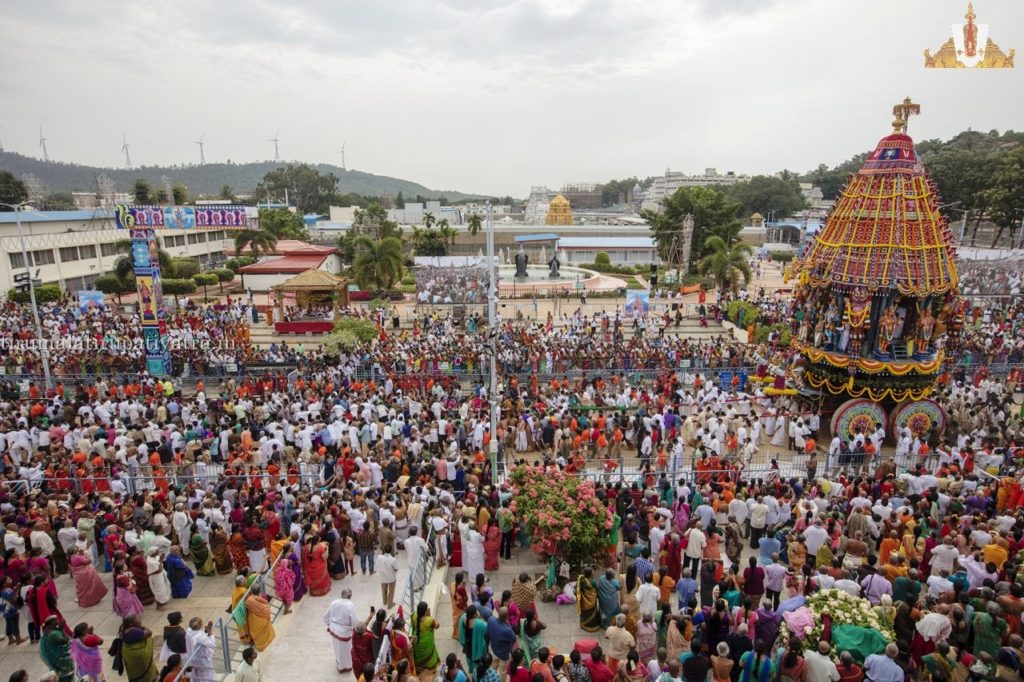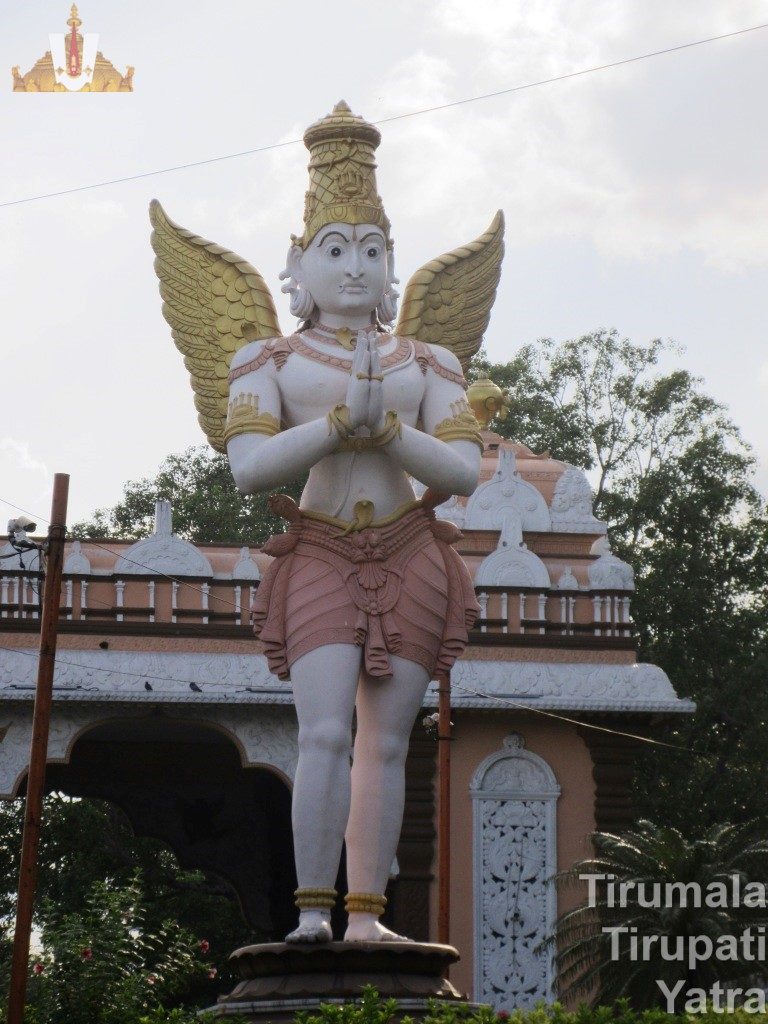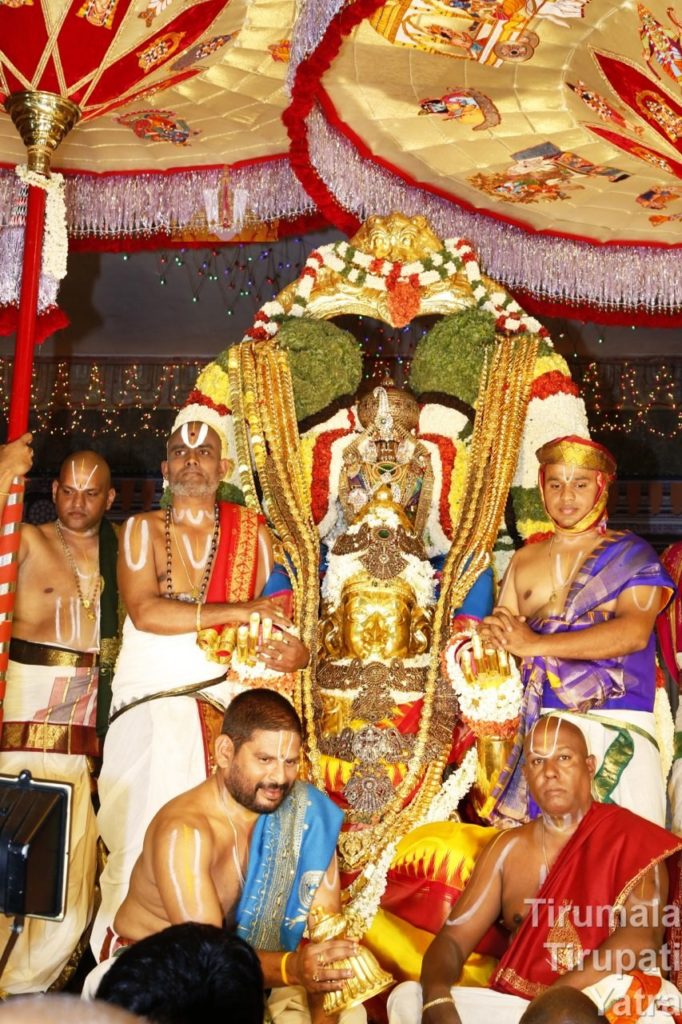The Glory of the DIVINE MOTHER
Sriman Narayana, the Almighty manifests Himself in five distinct forms namely the Param, Vyuham, Vibhavam, Antaryami and Archa. In all these forms the Lord is always inseparably united with His divine consort Sri Mahalakshmi.
The Parabrahamam is identified only by the presence of the “Sri”, the Divine Mother.
The Vedas, the verses of the Alwars, the Itihasas, and the Puranas authored by the sages like Valmiki, Vyasa, and Parasara all established the divine couple as the ‘Paratatvam’. While praising the Lord, the Vedas identify him as the one who is “Sripati”. Likewise, while speaking of the Divine Mother, the Sri Suktam hails Her as “Vishnupatni”.
The Almighty has two kinds of determination namely Anugraham and Nigraham. He is undoubtedly an ocean of mercy, the protector of all. He also has the crucial role of establishing ‘dharma’ for which it is necessary to annihilate the demonic forces.
The benign Goddess Sri Mahalakshmi is the abode of unalloyed grace and mercy and has no intent of punishing even the worst sinners like Ravana or Kakasura.
“I pray to the goddess who being the consort of the Lord is with Him in all the acts of protecting the whole universe. She is the very personification of mercy and is incapable of the very thought of punishing anyone” says Swami Desikan in his stotra, Yathiraja Saptathi.
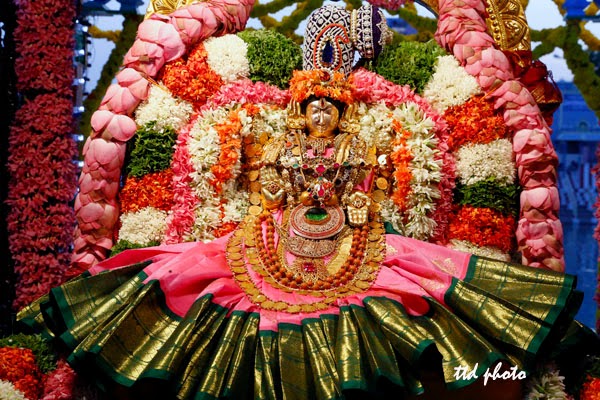
The Almighty is resplendent as Sriman Narayana in all His manifestations. In Srivaikunta, His permanent abode, He is the Lord of the Celestials and is worshipped by Nityasuris like Ananta, Garuda, Viswaksena, and Muktas who reach the land of bliss after liberation. In this Nitya Vibhuti, His permanent abode, He is ever present with His consort the Divine “Sri”.
This land of bliss is beyond the reach of mortals and even Devatas. When the Devatas want to approach the Lord, they do so in His abode in the Milky Ocean. The Lord is present with Sri Mahalakshmi reclining on the Adi Sesha here.
The Almighty in all His mercy comes down to the mortal world, His ‘Leela Vibhuti’, from time to time to protect the virtuous, annihilate demonic forces, and uphold ‘dharma.’ These incarnations are called the ‘Vibhava Avatharas’.
In all these appearances, the Divine Mother incarnates with Him in every ‘avathara.’ When He appeared as Lord Rama, the Goddess Srilakshmi appeared as Sita. When He incarnated as Lord Krishna, She appeared as Rukmini. The sage Parasara in his Vishnu Puranam shows that in every form the Lord assumes, Sri Mahalakshmi too assumes a form that is eminently suitable to His divine ‘leela’.
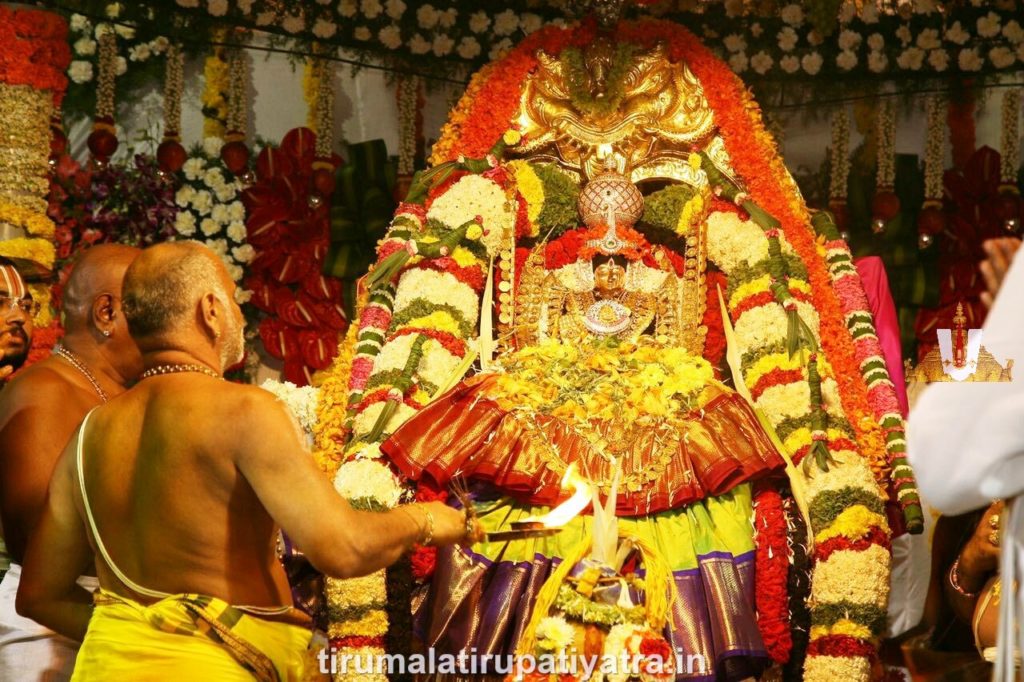
The Almighty is present within every object in His creation. The Paramatma’s presence within our soul is called ‘Antharyami’. This very minute manifestation too is in unison with His ‘Sri’.
All the above manifestations are beyond the reach of the human beings. Param and Vyuham cannot be attained with the physical body. ‘Vibhava Avatharas’ can be enjoyed only by those who lived in the times of the incarnation.
The Lord within the human beings can be realized only by great ‘yogis’ with immense spiritual strength. The form which is easiest to attain, infinitely merciful, and available always to all the seekers without any discrimination is the Archa (idol) form.
This Thirumeni is “Subhasrayam” meaning it is divine and can destroy the evil ‘karma’ of all who worship it and confer all boons. It is always available. The Lord is waiting for His devotees to come to Him.
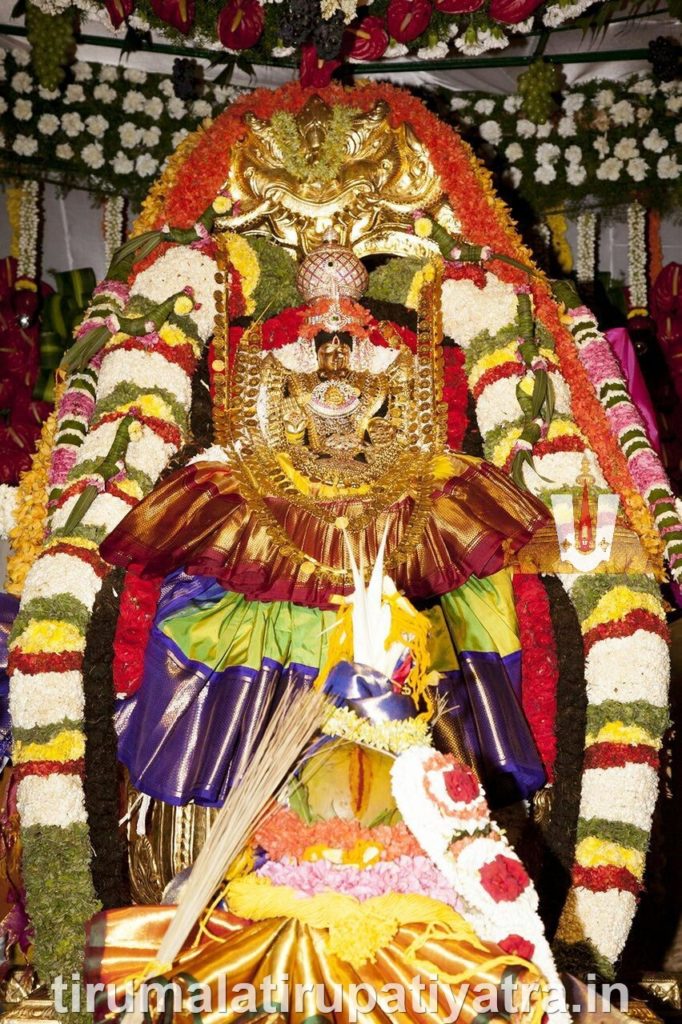
In the Archa form, the Almighty in all temples is seen with His divine consort who is ever present in His chest as ‘Thirumarbu Lakshmi’.
The Lord’s holy chest is a temple for Her to reside both to be ever-present with Him and to be ever-available to bless His devotees. In some temples, she resides in exclusive shrines like ‘Thani Kovil Nachiyar’ like in Srirangam and Kanchipuram. In some temples, She resides with the Moola Moorthi as in Uppiliappan Kovil, Thirunaraiyur. In most temples, one finds Her as Ubhaya Nachiyars along with the ‘Utsavar’.
In Thiruvengadam (Tirumala) the most prominent among the Divya Desams the Lord is named Srinivasa as the Devi is inseparably wound up with Him. She showers grace as the ‘Thirumarbu Lakshmi’ and as Sridevi and Bhudevi in the Bhoga Archa. There is no separate shrine for the goddess within the temple on the Hills. The separate Sannidhi (Shrine) to the Alarmel Mangai
Thayar (Sri Padmavathi Devi) is at the base of Tirumala Hills in Alarmelmangapuram or Tiruchanur. This ‘kshetra’ has been widely spoken of in the Puranas like the Padma Puranam and the Varaha Puranam as the ‘avatara kshetra’ of the goddess. She is said to have emerged here in a golden lotus in the Padma Sarovaram, the temple tank when Lord Srinivasa performed penance and worshipped Her with divine golden lotus flowers.
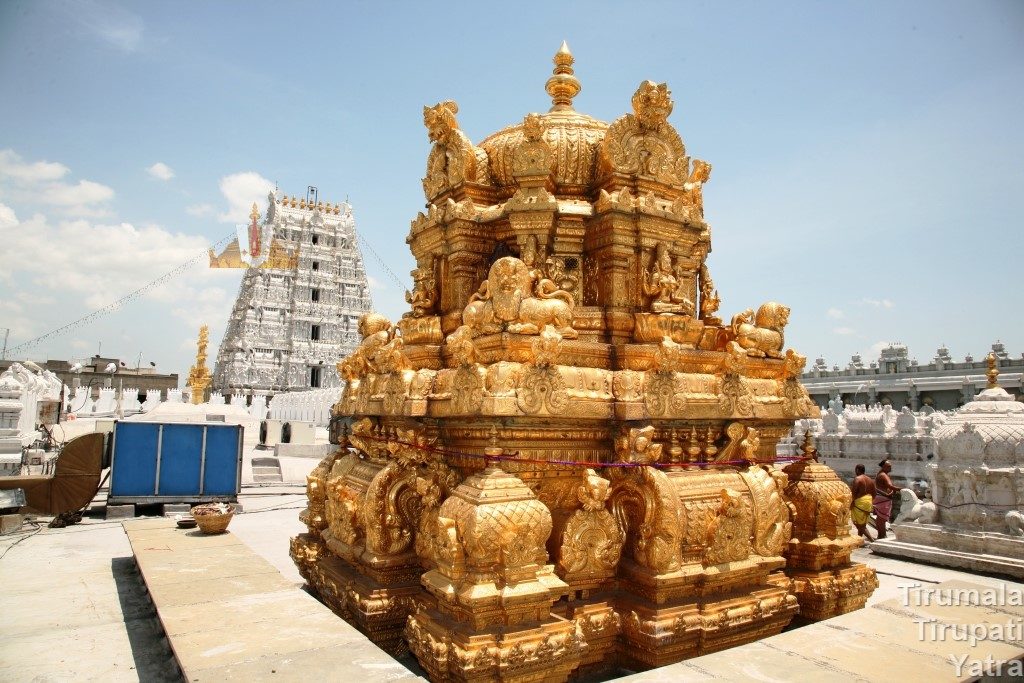
This Pushkarini is compared with the celestial Milky Ocean where the Devi incarnated when the Lord churned it assuming a thousand arms to help the ‘devas’ get ‘amruta’ to empower them to fight with the ‘asuras.’ The task was so mighty that the Lord enticed the ‘asuras’ to participate for a share of ‘amruta.’ He assumed numerous forms to join both sides and also became a divine tortoise (Koormavatara) to support Mandara Hill from below.
The Divine Sri emerged from the churning Ocean and was bathed with golden pots from the heavenly waters carried by the clouds Pushkala, Avartaka which was showered by eight elephants. The Goddess rose from Her Padmasana, walked straight to the Lord and garlanded Him as all the Devas watched the extraordinary scene. What started as an exercise to procure ‘amruta’ for the Devas turned out to be a clever plot with a concealed plot for the Lord to be united with His consort.
The Devas got their ‘amruta’ while the Lord, the Universal Charmer got back His Devi who is also known by name ‘Amruta’. The incarnation of the Goddess Padmavathi Thayar in the Padma Sarovaram at Tiruchanur is a divine ‘leela’, very similar to the mind-boggling effort of churning an ocean with a mountain.
Lord Srinivasa performed ‘Tapas’ in this sacred ‘kshetra’ to be united with His consort.
Various Utsavams
At Tiruchanur, her ‘avatara sthalam,’ Goddess Padmavathi resides in the ‘archa’ form ever ready to shower Her benign grace on Her devotees. It has been an age- old tradition to worship the goddess before ascending the hills to secure ‘darshan’ of the Lord of Thiruvengadam.
All the rituals are performed according to the ‘Pancharatra Agama’ tradition in Tiruchanur. The Golden Vimanam in Tiruchanur is called ‘Shanthi Nilayam. This is a temple where the goddess enjoys a pre-eminent position and is hailed by the Agama Sastra as ‘Svatantra Veera Lakshmi’.
She enjoys all kinds of ‘utsavas’ (Nithyotsava, Pakshotsava, Masotsava, Samvatsarotsava and Pavitrotsava), Thirumanjanam on Fridays, Unjal Seva and daily Kalyanotsavam. During the annual Karthika Brahmotsavam, the Goddess comes out of the temple in various mounts like Chinna Sesha Vahanam, Pedda Sesha Vahanam, Garuda Vahanam, Hanumantha Vahanam, Gaja Vahanam, etc.
The Vahana Seva tells Her devotees that the celestial beings like Garuda and Sesha serve the Lord’s consort just as they serve the Lord. In the Brahmotsavams for the Padmavathi Thayar the Gaja Vahanam is the highlight just as Garuda Vahanam is special for the Lord.
This is because the elephant is regarded as the symbol of royalty, great wealth, and regal splendour. It is fitting that the goddess of wealth should ride the elephant. Moreover, the temple flag hoisted in the Dwajasthambham too is adorned with an elephant.
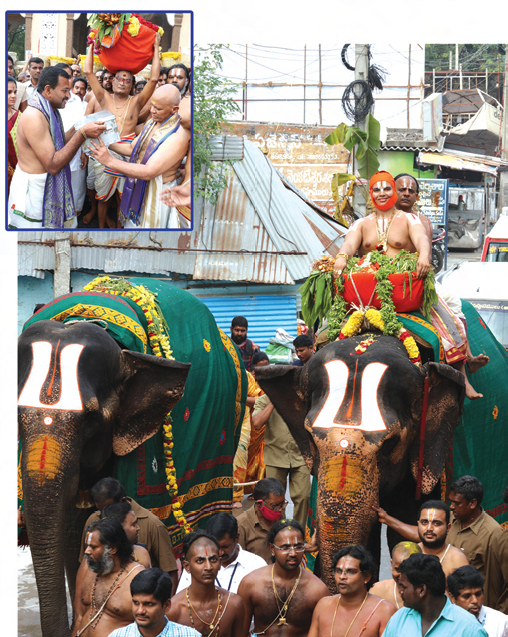
The goddess is present in many temples as Gaja Lakshmi with two elephants offering garlands with utmost devotion and reverence. The Puranas describe the story of Lord Indra’s elephant throwing and stamping Lakshmi Devi’s ‘prasadam’.
Since then, all elephants are atoning for the great sacrilege by devoted service to the Devi.
The glorious ‘darshan’ of the goddess Padmavathi Thayar, Her Thirumeni sparkles with the glow of gold and her holy face and eyes brim with grace. Her rich silk robes, exquisite ornaments and her huge floral garlands complete the picture of perfection.
The goddess is seated on a lotus flower and holds lotus flowers in Her hand. Unlike the Lord She carries no weapons as She is the personification of grace and mercy.
The Brahmotsavams of Sri Padmavathi Devi in this year will be conducted between 10th November 2023 to 18th November 2023. The grand festival will conclude with the Theerthavari on 18th November 2023 which is famous as ‘Panchami Theertham’ as it falls on Panchami Thithi of Suklapaksham, Karthik month to mark the holy ‘avatara’ of the goddess Padmavathi Thayar.
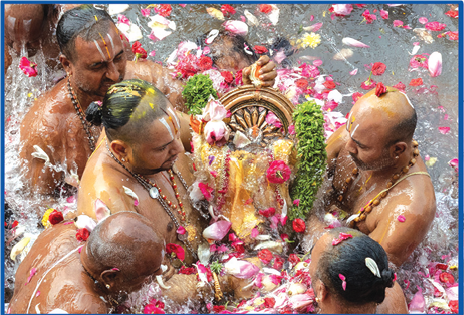
Auspicious Presents from Swami to Ammavaru
Lord Srinivasa sends an array of auspicious presents like turmeric, sandal paste, rich silks, dazzling ornaments, and garlands to greet His consort. All these offerings are brought from the Tirumala Hills by the officials, and priests and carried to Tiruchanur on an elephant. Lakhs of devotees pour into Tiruchanur to take a dip in the Padma Sarovar to celebrate the day joyously and receive the blessings of the Goddess.
The SVBC channel brings the spectacular ‘utsavam’ live to give ‘darshan’ to people all over the world and to shower the blessings of the goddess Padmavathi Devi on Her devotees forever.
Information Source – SAPTHAGIRI Magazine – Tirumala Tirupati Devasthanams
